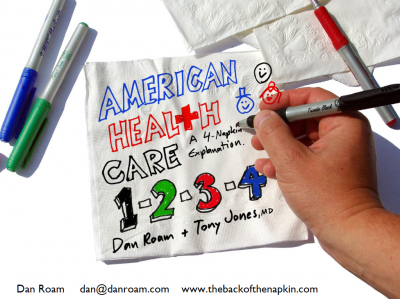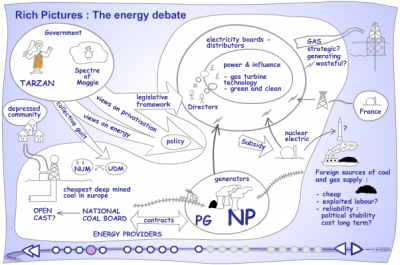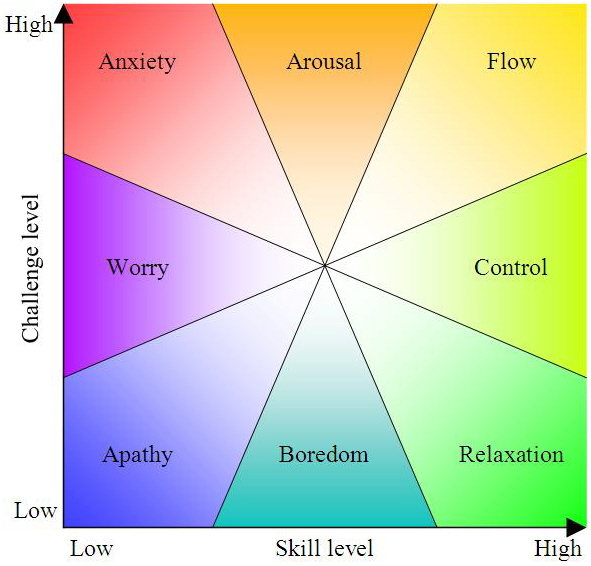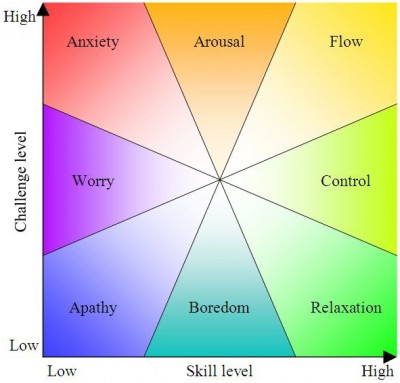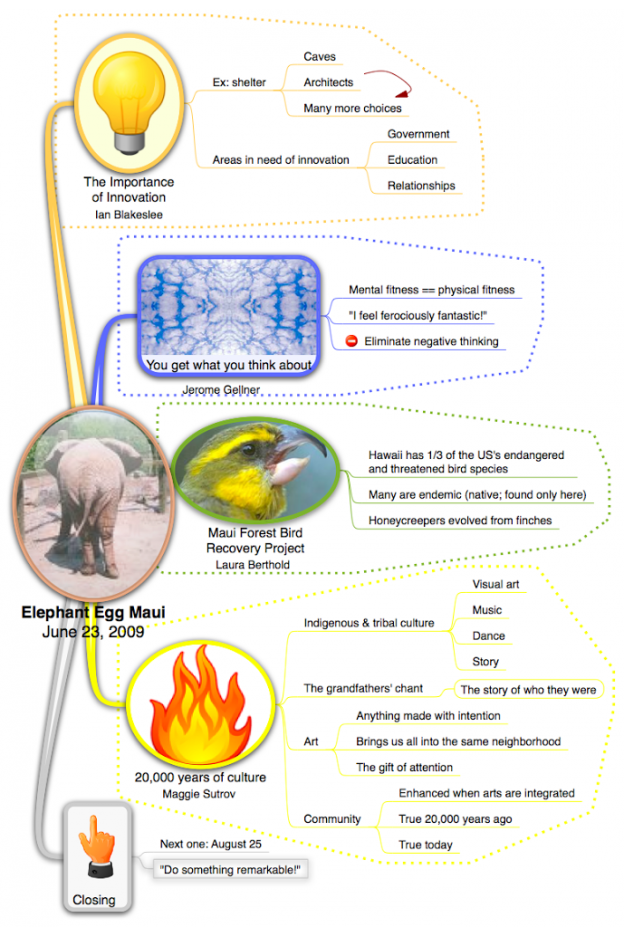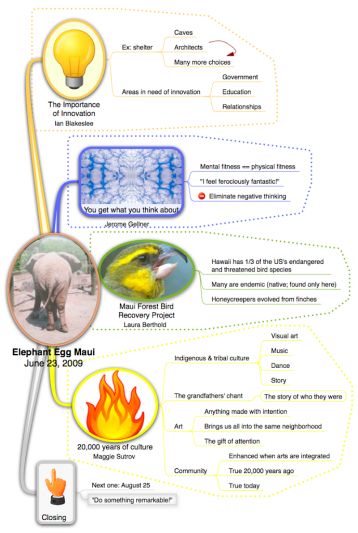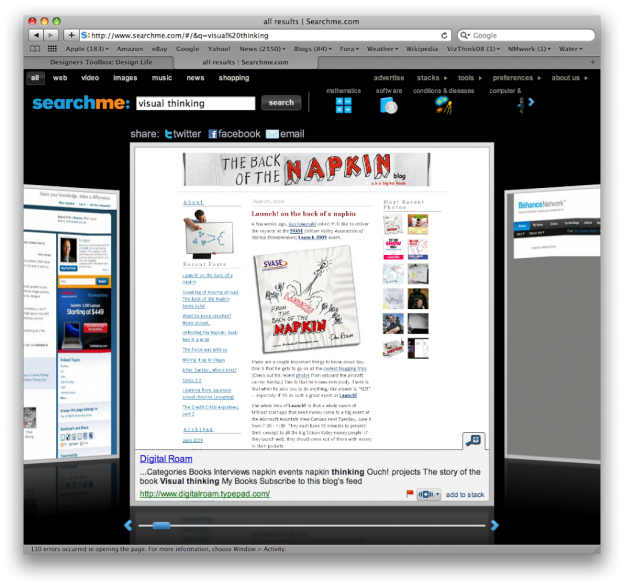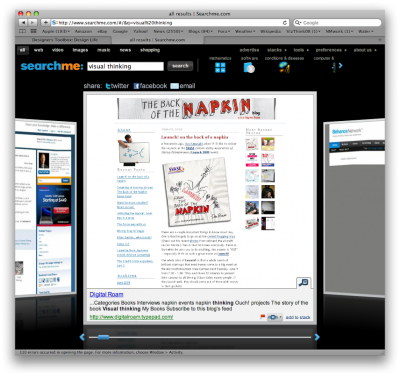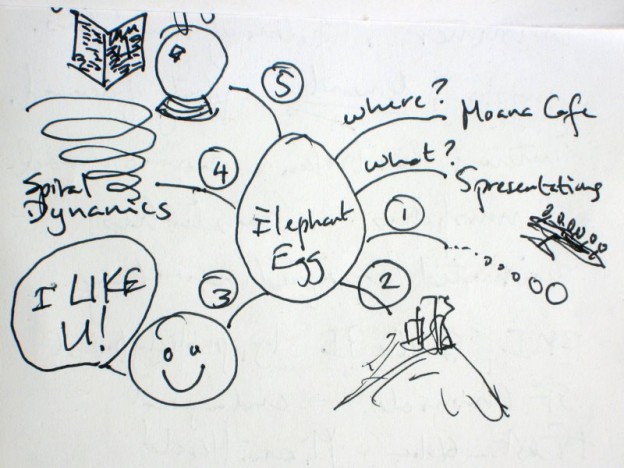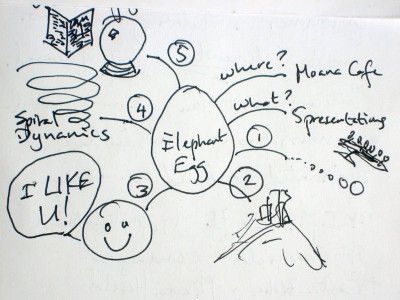
One night a couple weeks ago, I attended an event called “Elephant Egg,” held at Moana Cafe. Maggie Sutrov‘s invitation promised “Five Presentations by Five Inspiring People.” I recognized the format as pecha kucha, which I’d heard of but never experienced (20 slides shown for 20 seconds each, for a total of 6 minutes and 40 seconds). I was out of town at VizThink for their first event, so I made a point of going to this one. It was defnitely worthwhile!
There were five presentations:
- An outrigger canoe trip to Kure in the Northwestern Hawaiian Islands, by Peter Nice
- Photos from a trip to India near Nepal (above 15,000 feet!), by Daniel Sullivan
- Likability, by Bob Sommers
- Spiral Dynamics, by Ian Blakeslee
- The future of newspapers, by Maui News reporter Ilima Loomis
The format kept the presentations short and focused, and gave just enough information to be intriguing and open opportunities for questions. They’re planning to hold them every couple months, so the next one will probably be in late June.


